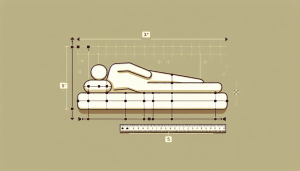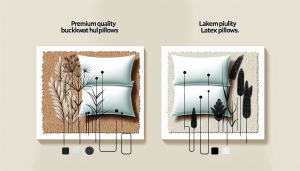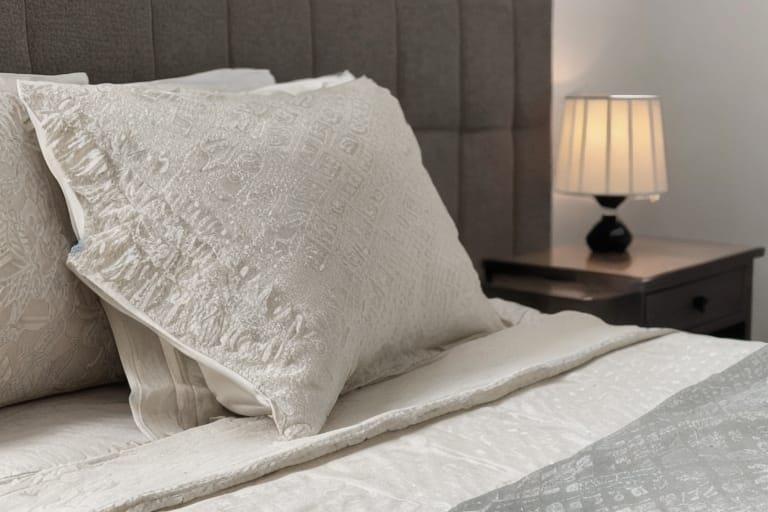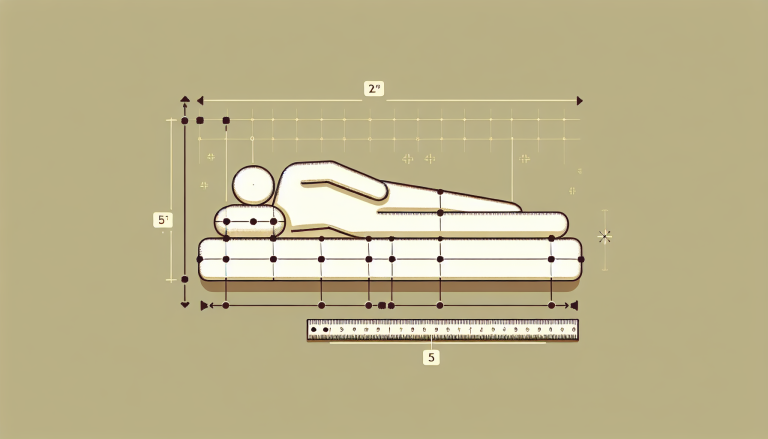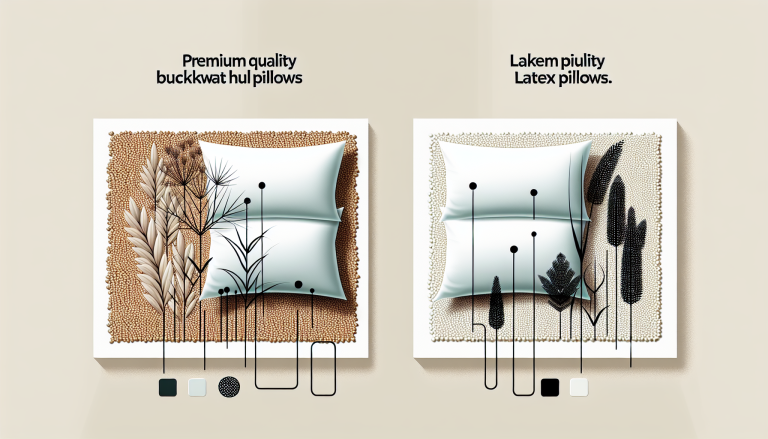Are you in the market for a cozy and comfortable down comforter? With so many options available, it can be overwhelming to choose the perfect one. In this beginner’s guide, we’ll break down everything you need to know about down comforters, from understanding fill power and thread count to the differences between down and down alternative. By the end, you’ll be equipped with the knowledge to select a comforter that will keep you warm and snug for years to come.
What is a Down Comforter?
A down comforter, also known as a down duvet, is a type of bedding filled with the soft, fluffy undercoating of ducks or geese. This insulating material, called down plumage, consists of clusters of fine feathers that trap air, creating a lightweight yet incredibly warm blanket. Down comforters are popular for their breathability, loft, and ability to regulate temperature, keeping you comfortable in all seasons.
Understanding Fill Power
One of the most important factors to consider when choosing a down comforter is fill power. Fill power is a measure of the loft and insulating ability of the down. It represents the volume, in cubic inches, that one ounce of down occupies. The higher the fill power, the more air the down can trap, resulting in a warmer and fluffier comforter.
| Fill Power | Quality | Warmth |
|---|---|---|
| 400-500 | Basic | Light |
| 600-700 | Medium | Medium |
| 800+ | High | Warm |
As a general rule, comforters with a fill power of 600 or higher are considered high-quality and provide excellent insulation. However, keep in mind that a higher fill power also means a higher price tag.
Thread Count and Fabric
The fabric shell of your down comforter plays a crucial role in containing the down and preventing feathers from poking through. Look for comforters with a high thread count, which refers to the number of threads per square inch of fabric. A thread count of 300 or higher is ideal for a soft and durable comforter.
Cotton is the most popular choice for comforter shells, as it is breathable and easy to care for. Egyptian cotton and Pima cotton are known for their exceptional quality and softness. Alternatively, you may find comforters with synthetic shells, such as polyester, which are less expensive and can be more moisture-resistant.
Down vs. Down Alternative
While down comforters are prized for their warmth and fluffiness, they may not be suitable for everyone. Some people are allergic to down, while others prefer a more animal-friendly option. In these cases, down alternative comforters are a great choice.
Down alternative comforters are filled with synthetic materials, such as polyester or microfiber, designed to mimic the insulating properties of down. They are typically less expensive, easier to clean, and hypoallergenic. However, they may not have the same loft and breathability as authentic down comforters.
| Feature | Down | Down Alternative |
|---|---|---|
| Fill | Natural down plumage | Synthetic fibers |
| Warmth | Excellent | Good |
| Breathability | High | Moderate |
| Allergies | May trigger | Hypoallergenic |
| Price | Higher | Lower |
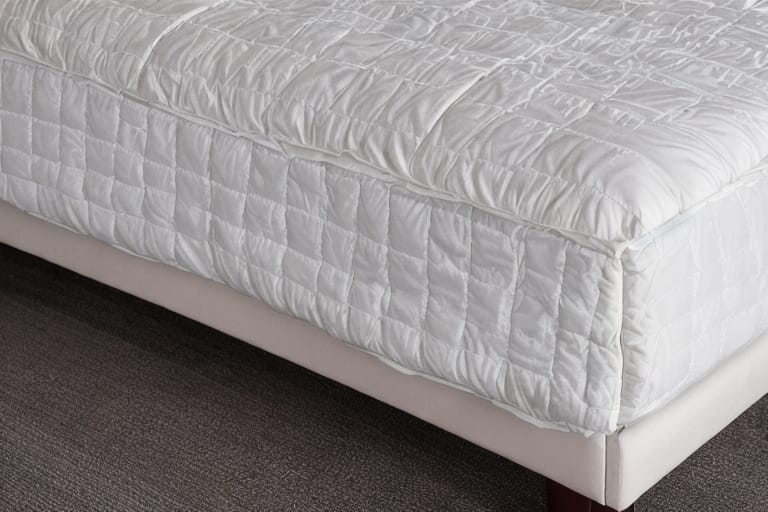
Maintaining Your Down Comforter
To keep your down comforter in top condition, it’s essential to follow proper care instructions. Regular fluffing and shaking can help redistribute the down and prevent clumping. When storing your comforter, use a breathable bag and avoid compressing it to maintain its loft.
Cleaning a down comforter requires special care. Check the manufacturer’s instructions for specific guidance. Most can be machine washed on a gentle cycle with mild detergent and dried on low heat with tennis balls to prevent clumping. Avoid using bleach or fabric softeners, as these can damage the down.
Top Down Comforter Recommendations
- Brooklinen Down Comforter – This luxurious comforter features 700 fill power, a 400 thread count cotton sateen shell, and baffle box construction for even distribution. Available in three weights: Lightweight ($269), All-Season ($349), and Ultra-Warm ($449).
- The Company Store LaCrosse Down Comforter – With 800 fill power and a 500 thread count cotton shell, this comforter offers exceptional warmth and softness. Available in Light ($379), Medium ($429), and Extra Warmth ($479) options.
- Parachute Down Duvet Insert – This 750 fill power comforter is encased in a sateen cotton shell with a baffle box design. Choose from Lightweight ($279), All-Season ($399), and Extra Warm ($479) versions.
Expert Insights
“When selecting a down comforter, pay attention to the fill power and thread count. These factors significantly impact the warmth, loft, and durability of your comforter. Additionally, consider your climate and personal temperature preferences to choose the appropriate weight.” – Sarah Johnson, Interior Designer
“Proper care is essential for maintaining the quality and insulating properties of your down comforter. Regular fluffing and shaking help redistribute the down clusters and prevent compacting. Always follow the manufacturer’s cleaning instructions to avoid damaging the delicate **down **and feathers.” – John Smith, Textile Expert
Final Thoughts
A high-quality down comforter is an investment in your comfort and sleep. By understanding factors like fill power, thread count, and the differences between down and down alternative, you can make an informed decision when selecting the perfect comforter for your needs. Remember to prioritize breathability, insulation, and proper care to ensure your comforter provides warmth and coziness for years to come.

Frequently Asked Questions
- How do I choose the right warmth level for my down comforter? Consider your climate, season, and personal temperature preferences. Lightweight comforters are ideal for summer or warmer regions, while medium-weight comforters are suitable for year-round use. If you live in a cold climate or prefer extra warmth, opt for a heavyweight comforter.
- Can I wash my down comforter at home? Yes, most down comforters can be machine washed on a gentle cycle with mild detergent. Always check the manufacturer’s care instructions first. Use a large capacity washer and dryer, and add tennis balls to the dryer to prevent clumping and maintain fluffiness.
- How often should I replace my down comforter? With proper care, a high-quality down comforter can last 10-15 years. However, if you notice thinning, flattening, or lumping of the down, or if the comforter no longer keeps you warm, it may be time for a replacement.
- What is the difference between a down comforter and a down duvet? The terms “down comforter” and “down duvet” are often used interchangeably. Both refer to a fluffy, insulating blanket filled with down feathers. However, in some regions, a duvet may be used to describe the removable cover that encases a comforter insert.
- Are down comforters hypoallergenic? Down itself is not hypoallergenic and may trigger allergies in some people. However, many manufacturers offer down comforters that have undergone special cleaning processes to remove allergens. If you have severe allergies, consider a down alternative comforter instead.
- How can I prevent my down comforter from shifting or clumping? Look for comforters with baffle box construction, which features internal walls that keep the down evenly distributed. Regular fluffing, shaking, and airing your comforter can also help maintain its shape and prevent clumping. Avoid compressing or storing the comforter in tight spaces for extended periods.
- What is the most breathable fabric for a down comforter shell? Cotton is the most breathable and moisture-wicking fabric for down comforter shells. Look for high-quality options like Egyptian cotton or Pima cotton with a thread count of 300 or higher. Synthetic fabrics like polyester may be less breathable but offer better moisture resistance.

